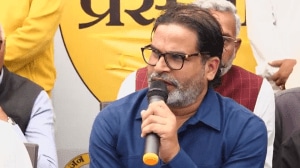Explained: What is the Mid-Autumn Festival all about and how is it celebrated?
The Mid-Autumn Festival is an important celebration across East Asian and Southeast Asian countries, particularly those that have Chinese communities.
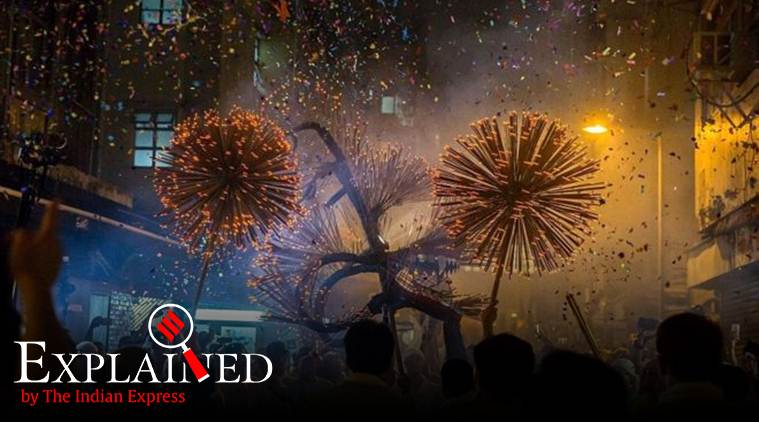 The Tai Hang Fire Dragon Dance team in Hong Kong performs a century-long tradition of waving incense-lit, straw-filled dragons to bring blessings to onlookers.
The Tai Hang Fire Dragon Dance team in Hong Kong performs a century-long tradition of waving incense-lit, straw-filled dragons to bring blessings to onlookers.
Asian countries and communities around the world celebrate the Mid-Autumn Festival, a harvest festival that marks the end of the autumn harvest and appearance of the fullest moon of the year. According to the Lunar calendar, the festival falls on the 15th day of the lunar month, in late September or early October, depending on the lunar cycle. India also has its own harvest festivals that occur around the same time on the calendar but go by different names depending on the region in the country.
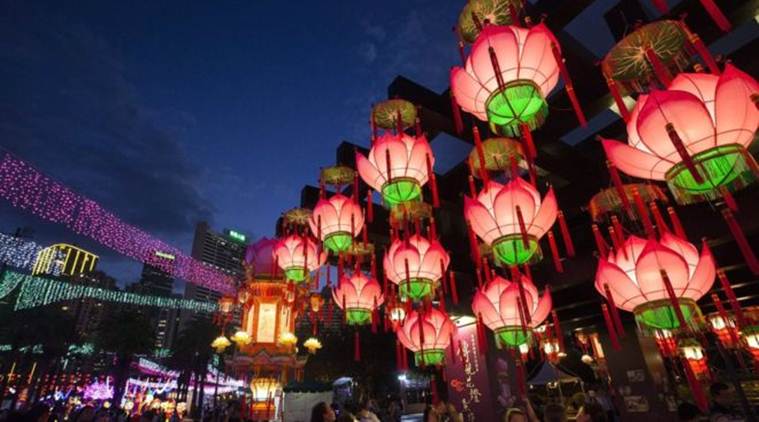 Lanterns hang in Victoria Park in celebration of the full moon during the Chinese mid-Autumn Festival in Hong Kong, China, 15 September 2016. (Photo credit: EPA)
Lanterns hang in Victoria Park in celebration of the full moon during the Chinese mid-Autumn Festival in Hong Kong, China, 15 September 2016. (Photo credit: EPA)
Why do communities around the world celebrate harvest festivals?
The harvest festivals celebrated in Asia and in other parts of the world that occur within days and weeks of each other, include common themes of family and gathering, prayers and thanksgiving and gratitude for a good harvest. Variations in cultural and religious practises and the names of the festivals depend on the country and region but the overarching theme of the autumnal harvest is the same.
What are alternative names for the Mid-Autumn Festival?
In China, Hong Kong, Macau and Taiwan, the Mid-Autumn Festival is known as the Zhōngqiū Jié in Mandarin and is an extended public holiday in the country. In Singapore, the Mid-Autumn Festival is also called the Mooncake Festival after the namesake sweetmeats that are prepared for the festival. In Vietnam, the festival goes by the name of Tết Trung Thu. In Indonesia, Indonesians with Chinese heritage also celebrate a version of the Mooncake Festival.
 A tray of freshly baked mooncakes set out for cooling in a shop in Chinatown, New York City, days before the Mid-Autumn Festival in 2016. (Photo credit: Neha Banka)
A tray of freshly baked mooncakes set out for cooling in a shop in Chinatown, New York City, days before the Mid-Autumn Festival in 2016. (Photo credit: Neha Banka)
Malaysians with Chinese ethnicity also celebrate the Mid-Autumn Festival. In Cambodia, the festival is called the Full Moon Festival and is not only celebrated by people with Chinese heritage but others as well. In North Korea and South Korea, the Mid-Autumn Festival is known as Chuseok, a three-day national holiday when Koreans visit their hometowns and meet family and friends. In Japan, the Mid-Autumn Festival is known as Tsukimi that translates to “looking at the moon” and is also called “Moon Viewing Ceremony”.
How is Mid-Autumn Festival celebrated across East Asia & Southeast Asia?
The Mid-Autumn Festival is an important celebration across East Asian and Southeast Asian countries, particularly those that have Chinese communities. The festival is celebrated over three to four days in an extended holiday and is a time for families to get together to meet. Since the festival is meant to mark a good harvest, food plays an important role in celebrations in all countries.
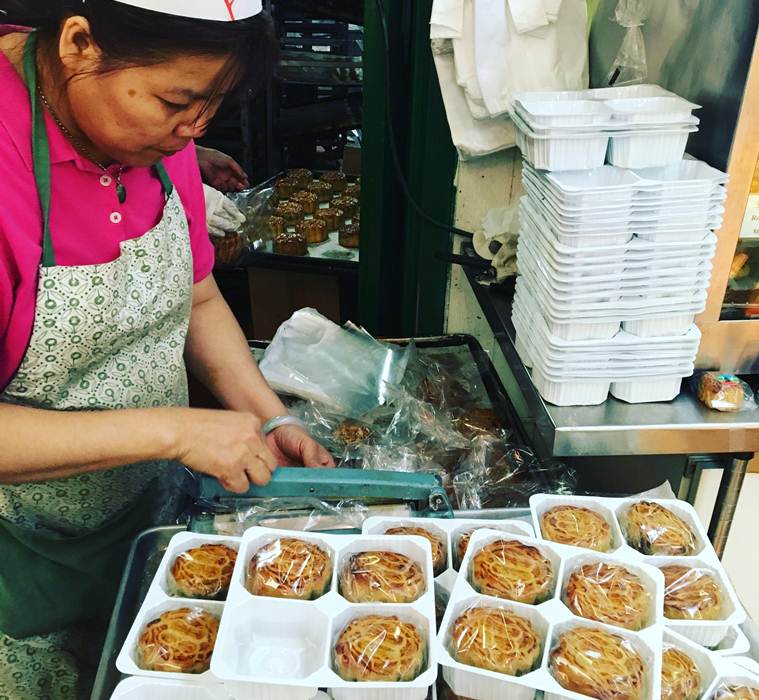 A woman packs mooncakes in Chinatown, New York City, a few days before the start of the Mid-Autumn Festival in 2016. (Photo credit: Neha Banka)
A woman packs mooncakes in Chinatown, New York City, a few days before the start of the Mid-Autumn Festival in 2016. (Photo credit: Neha Banka)
The Mooncake is a dense pastry that is strongly associated with the Mid-Autumn Festival and the pastries are usually prepared as a speciality only during this harvest festival. The mooncake is eaten in small pieces with tea and are also used for gifting. The pastries are prepared using egg yolk in the center to represent the moon, but there are also variations that swap the egg yolk for red bean or lotus seed paste. The surface of the mooncakes are pressed with intricate designs using Chinese characters specific for the Mid-Autumn Festival and the popularity of the pastry has led to bakeries coming up with innovative designs and flavours to attract diverse customers.
 Mooncakes are also used for gifting purposes during the Mid-Autumn Festival. Mooncake gift packs available for purchase in a store in Chinatown, New York City in 2016. (Photo credit: Neha Banka)
Mooncakes are also used for gifting purposes during the Mid-Autumn Festival. Mooncake gift packs available for purchase in a store in Chinatown, New York City in 2016. (Photo credit: Neha Banka)
In Vietnam, the mooncake is called Bánh Trung Thu and is also eaten during the harvest festival. In South Korea, during Chuseok, the preparation of songpyeon, small rice cakes made of rice powder, is an integral part of the harvest festival celebrations, along with different types of rice wine, fruits and other foods prepared using the seasonal harvest.
In Japan, dango, sweet rice dumplings, are associated with the Mid-Autumn Festival of Tsukimi and are eaten during the festival. Along with dango, susuki, a Japanese pampas grass, sweet potatoes, taro, chestnuts, sake and other seasonal produce are placed as offerings to the moon.
Does India also celebrate autumnal harvest?
The diversity of communities and religions in India has resulted in unique versions of harvest festivals for the spring and autumn harvest cycles. East Indian Catholics who today mostly live in Mumbai, celebrate the harvest festival of Agera to mark the end of the monsoon and the harvest of new crops. The etymology of the festival can be traced to the Latin word ‘ager’ that means productive or arable land or farm.
In the state of Mizoram, the festival of Mim Kut is celebrated in the months of August & September after maize crops are harvested. In the state of Odisha, Nuakhai is celebrated a day after the festival of Ganesh Chaturthi. The name of the festival Nuakhai means “new” (Nua) “rice” (Khai) after the new harvest of rice. In Arunachal Pradesh, the Bugun, a scheduled tribe, celebrates Pham Kho Sowai, a harvest festival that starts around September 10 every year. The festival involves worship of the mountain and water sources like rivers, that are the main sources of livelihood for this tribe. Onam is a harvest festival in Kerala where food is an integral part of the celebrations. Along with music, dance and other cultural practices, the festival also involves the preparation of dishes using seasonal vegetables served on a banana leaf, with the number of the served dishes ranging anywhere between 10 to 30 in a single sitting.
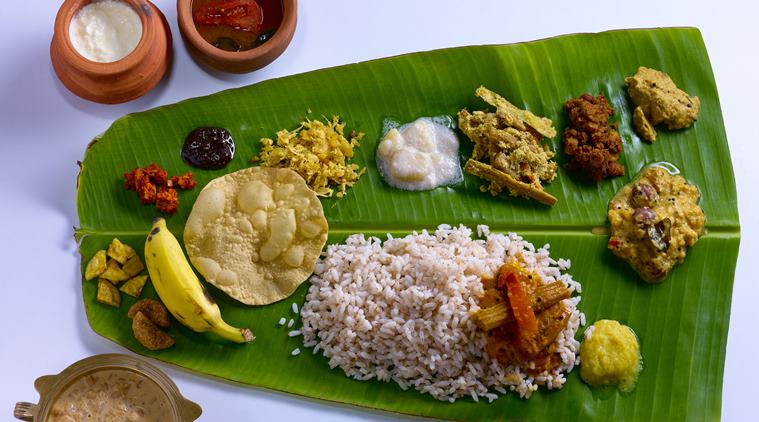 Traditional Onam sadhya is served on banana leaf.
Traditional Onam sadhya is served on banana leaf.
Did you know Asia’s harvest festivals have their own emojis?
Last year, the mooncake was approved and added as part of Unicode 11.0 and was released on June 5, 2018. Emojipedia, a website that explains emoji characters and documents emoji launches said, “The round, golden-brown pastry of a Chinese mooncake, (is) a traditional delicacy and lunar symbol of the Mid-Autumn Festival. Many platforms feature a design or character imprinted on the crust, and depict a slice cut out to show a brown paste with a duck egg yolk inside. Twitter displays the Chinese character for “fall/autumn” or “harvest” (秋) on top.”
New in iOS 12.1: 🥮 Moon Cake https://t.co/lqn3Qd3d23 pic.twitter.com/gO7ucMcsWk
— Emojipedia 📙 (@Emojipedia) October 30, 2018
In 2015, Emoji Version 1.0, the first release of emojis from Unicode, that includes emojis approved between 2010—2015, released an emoji for Tsukimi or the Moon Viewing Ceremony in Japan across several platforms, where the symbol showed Japanese pampas grass and dango, with the moon in the background.
🎑 Moon Viewing Ceremony: Monday 8th Sept. Celebrating the Harvest Moon / Mid-Autumn Festival http://t.co/GiGptnI3Lr pic.twitter.com/79ZVy27Xb5
— Emojipedia 📙 (@Emojipedia) September 8, 2014
Every year, a few days before Chuseok in South Korea, Twitter activates a Chuseok-special emoji that depicts a rabbit silhouetted before a full moon. According to folk tales in Korea, Japan, China, Cambodia, Vietnam, Myanmar and Thailand, among other nations, it is believed that one can see a rabbit pounding rice cakes using a mortar and pestle.
업텐션이 보내온 2019 추석 인사 (HAPPY CHUSEOK)#업텐션 #UP10TION #추석 #Chuseok #한가위 #MerryChuseok #보름달 #Fullmoonhttps://t.co/enA9s49F6L
— 업텐션(UP10TION) (@UP10TION) September 11, 2019
It is from this belief that the imagery of the moon rabbit originates and is associated with the harvest festivals in East Asian and Southeast Asian nations.
The moon during this time is called the Harvest Moon in some nations because it is the full moon closest to the date of the Autumnal Equinox, a season for the Autumn harvest. During this time, the moon looks unusually large due to an optical illusion. Sometimes, the Harvest Moon is also called the Blood Moon because it appears to be reddish in colour, a phenomenon that is attributed to atmospheric particles that tend to scatter the moonlight’s blue components, making it appear more red when it reaches the human eye.





- 01
- 02
- 03
- 04
- 05












